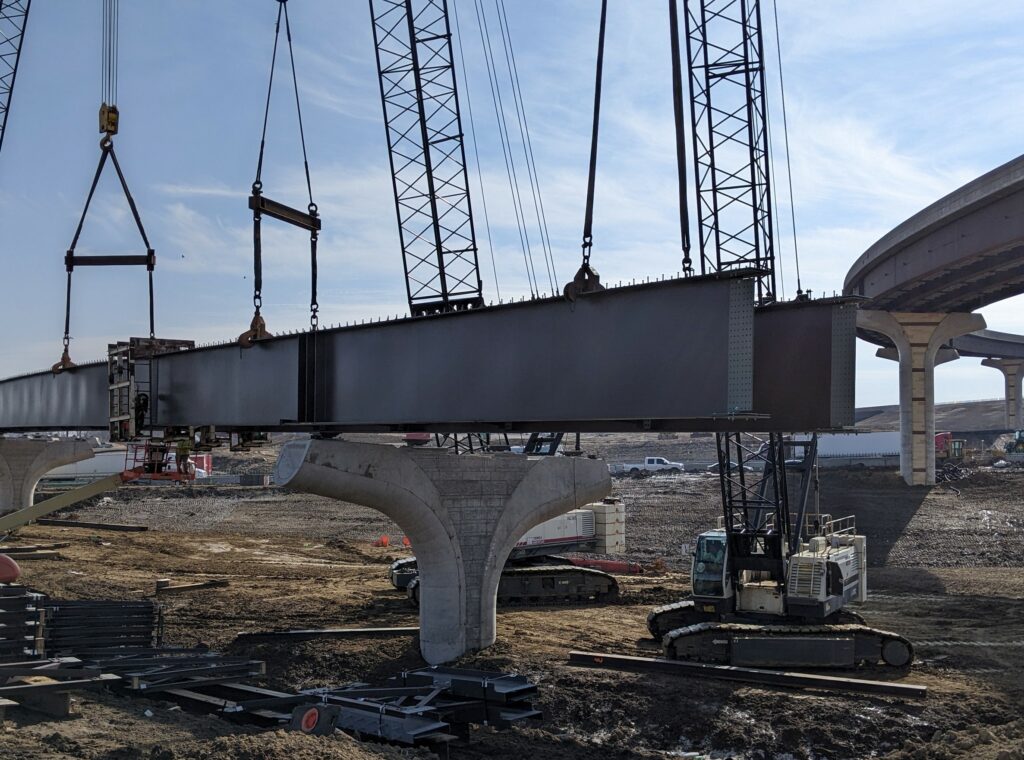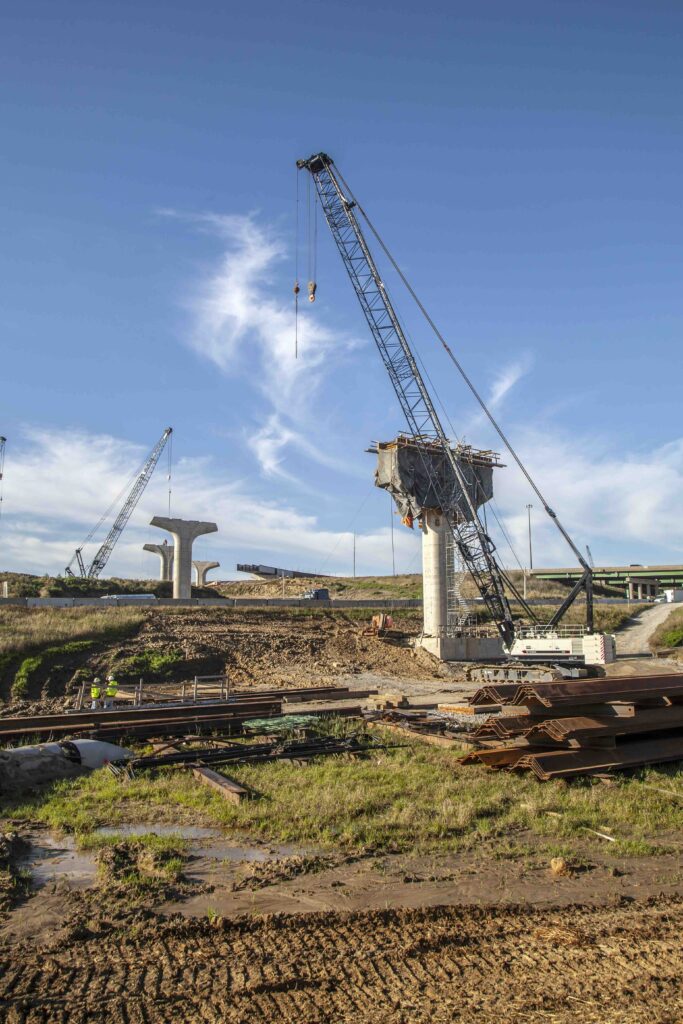
Reconstruction of a vital link in the Iowa transportation system accommodates growth and forecasted increases in traffic
By Brian Alvarado

Located near Coralville and Iowa City, Iowa in Johnston County at the junction of Interstate-80 (I-80), Interstate-380 (I-380) and U.S. Highway 218 (US 218), the Interstate 80/380 interchange is a vital link in the Iowa transportation system. The interchange, one of the busiest corridors in the region, supports connectivity, mobility, freight movement and economic vitality. I-80 is part of the Primary Highway Freight System, while I-380 is part of the regional Avenue of the Saints connecting Minneapolis and St. Paul, Minnesota and St. Louis, Missouri.
In 2017, it was discovered that the interchange had become functionally obsolete and no longer could handle increases in traffic and freight growth regionally. The Iowa Department of Transportation (Iowa DOT) determined that upgrades were needed.
To accommodate growth and forecasted increases in traffic, the Interstate 80/380 System Interchange Reconstruction project included the construction of 26 bridges, the removal of 80 lane miles of old pavement and the paving of 113 new lane miles. This resulted in 33 more lane miles added to the highway system. The reconstructed interchange and additional lanes allow more vehicles to travel safely and reliably through the area, reducing traffic congestion and crashes.
The project team widened I-80 to eight lanes and I-380/US 218 to six lanes and replaced four loop ramps of the clover-leaf interchange with directional ramps. Additionally, auxiliary lanes were included in some areas between adjacent interchanges to provide drivers more time to merge in or out of interstate traffic. By replacing the loop ramps and creating a higher capacity interchange, the project improves traffic flow, reduces the frequency of unexpected delays and reduces crashes and potential for rollovers.
With the Iowa DOT acting as lead roadway designer, lead inspector and overall coordinator, Forth Infrastructure, Braun Intertec, HNTB, Benesech, WHKS, Parsons, HDR and HR Green collaborated to bring the new interchange system to life.

During the development process, the team had several goals in mind. The first was to increase capacity and improve traffic operations within the region. Prioritizing safety and reducing congestion was also a motive. A pre-construction safety analysis showed that the new project would reduce the number of serious injuries and fatal crashes over the next 30 years, with traffic models predicting a savings of 64 million hours of travel time.
The previous interchange had experienced frequent crashes and incidents, while the I-380 corridor north of the interchange had one of the highest levels of rural incidents in the state. The new design relieves a major chokepoint (a point of congestion or blockage) in the regional and national freight system.
Additionally, the upgrades would bring regional employment and economic growth. I-380 north of the interchange is the busiest rural portion of the interstate in Iowa, with upwards of 53,000 vehicles per day where I-380 crosses the Johnston County/Linn County Boundary. Between Cedar Rapids and Iowa City metro areas, there are close to 18,000 daily commuters.
For the years 2025 to 2045, the average number of vehicles traveling daily on I-80, I-380 and U.S. 218 is expected to increase substantially: I-80, from 48,900 to 84,900; I-380, from 62,800 to 92,300; U.S. 218, from 41,200 to 61,100. So the numbers depict the potential for economic growth.
The development of the new interchange also came with its challenges and complexities. Work included vertical grade changes on I-80 and I-380, requiring temporary mesh wall construction. This work all had to occur while keeping traffic moving through the area.

“It was a challenging project to build a new interchange on top of the old one while safely maintaining traffic at one of the busiest and freight-critical interchanges in the Midwest; and our consultants, contractors and staff proved they were up to the challenge,” said District 6 Engineer for Iowa DOT Jim Schnoebelen.
The prime contractor reported that more than 200 workers were onsite each day during peak construction months. While most shifts were Monday to Friday from 6 a.m. to 6 p.m., some contractors worked on Saturdays.
The interchange was finally completed in August 2023 (three months ahead of schedule) and had a total cost of $369.4 million. The Iowa DOT secured a $50 million Infrastructure For Rebuilding America grant, which accelerated the process by two years. The new upgrades are estimated to benefit the state of Iowa and its citizens in multiple avenues for years to come.
This critical project will make it easier and safer for both commuters and freight haulers to travel through the area. Installing new directional ramps will increase the safety and flow of traffic, replacing the current loop ramps that cause congestion and safety issues due to weaving traffic.
Brian Alvarado is editor at large for American Infrastructure magazine.















